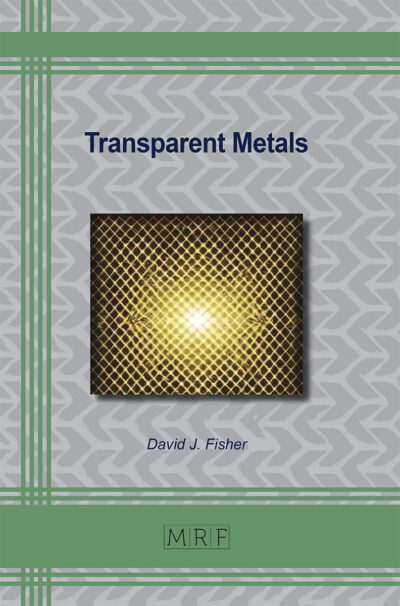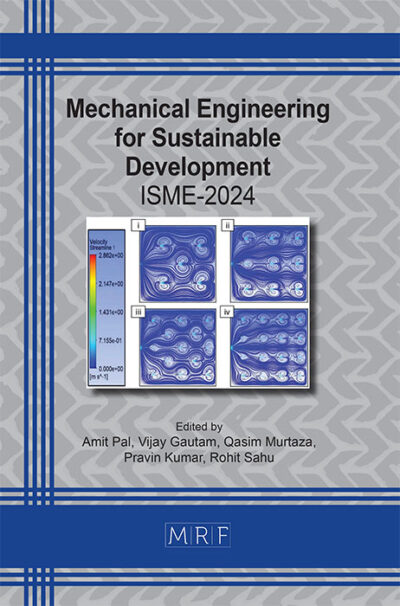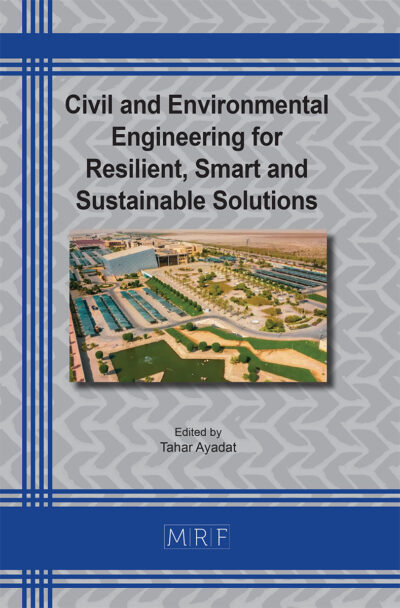Leveraging AI for Environmental Solutions addressing Climate Change, Pollution Monitoring and Sustainable Resource Management
Noreen Sher AKBAR, Ghanwa BATOOL, Shahan SIDDIQUI, Muhammad Bilal HABIB
Abstract. Artificial Intelligence (AI) has emerged as a transformative tool in addressing critical environmental challenges, including climate change, pollution monitoring, and sustainable resource management. This review synthesizes recent advancements and applications of AI techniques in these domains, highlighting key findings and identifying future research directions. In climate science, AI has significantly enhanced the accuracy of climate models and optimized renewable energy deployment, contributing to effective mitigation strategies. For pollution monitoring, AI-driven systems offer real-time detection and analysis, surpassing traditional methods in precision and scalability. In sustainable resource management, AI optimizes agricultural practices, forest conservation, and water resource allocation, promoting efficiency and sustainability. Despite these promising advancements, challenges such as data quality, model interpretability, integration with existing systems, and ethical considerations remain.
Keywords
Artificial Intelligence, Convolutions Networks, Environmental Solutions, Energy Efficiency, Sensor Networks, Data Fusion, Pollution Detection, Climate Forecasting, NASA
Published online 2/25/2025, 10 pages
Copyright © 2025 by the author(s)
Published under license by Materials Research Forum LLC., Millersville PA, USA
Citation: Noreen Sher AKBAR, Ghanwa BATOOL, Shahan SIDDIQUI, Muhammad Bilal HABIB, Leveraging AI for Environmental Solutions addressing Climate Change, Pollution Monitoring and Sustainable Resource Management, Materials Research Proceedings, Vol. 48, pp 892-902, 2025
DOI: https://doi.org/10.21741/9781644903414-97
The article was published as article 97 of the book Civil and Environmental Engineering for Resilient, Smart and Sustainable Solutions
![]() Content from this work may be used under the terms of the Creative Commons Attribution 3.0 license. Any further distribution of this work must maintain attribution to the author(s) and the title of the work, journal citation and DOI.
Content from this work may be used under the terms of the Creative Commons Attribution 3.0 license. Any further distribution of this work must maintain attribution to the author(s) and the title of the work, journal citation and DOI.
References
[1]. Bibri, Simon Elias, John Krogstie, Amin Kaboli, and Alexandre Alahi. “Smarter eco-cities and their leading-edge artificial intelligence of things solutions for environmental sustainability: A comprehensive systematic review.” Environmental Science and Ecotechnology 19 (2024): 100330. https://doi.org/10.1016/j.ese.2023.100330
[2]. Ruis, Andrew R., Yuanru Tan, Jais Brohinsky, Binrui Yang, Yeyu Wang, Zhiqiang Cai, and David Williamson Shaffer. “Thin Data, Thick Description: Modeling Socio-Environmental Problem-Solving Trajectories in Localized Land-Use Simulations.” In International Conference on Quantitative Ethnography, pp. 349-364. Cham: Springer Nature Switzerland, 2023; https://doi chapter/10.1007/978-3-031-47014-1_24
[3]. Bharadiya, Jasmin Praful. “Machine learning and AI in business intelligence: Trends and opportunities.” International Journal of Computer (IJC) 48, no. 1 (2023): 123-134. https://ijcjournal.org/index.php
[4]. Brown, Shona L., and Kathleen M. Eisenhardt. “The art of continuous change: Linking complexity theory and time-paced evolution in relentlessly shifting organizations.” Administrative science quarterly (1997): 1-34.
[5]. Ullo, Silvia Liberata, and Ganesh Ram Sinha. “Advances in smart environment monitoring systems using IoT and sensors.” Sensors 20, no. 11 (2020): 3113. https://doi.org/10.3390/s20113113
[6]. Krishnan, Siva Rama, M. K. Nallakaruppan, Rajeswari Chengoden, Srinivas Koppu, M. Iyapparaja, Jayakumar Sadhasivam, and Sankaran Sethuraman. “Smart water resource management using Artificial Intelligence—A review.” Sustainability 14, no. 20 (2022): 13384. https://doi.org/10.3390/su142013384
[7]. Habila, Mohamed Abdelaty, Mohamed Ouladsmane, and Zeid Abdullah Alothman. “Role of artificial intelligence in environmental sustainability.” In Visualization techniques for climate change with machine learning and artificial intelligence, pp. 449-469. 2023. https://doi.org/10.1016/B978-0-323-99714-0.00009-1.
[8]. Javaid, Mohd, Abid Haleem, Ibrahim Haleem Khan, and Rajiv Suman. “Understanding the potential applications of Artificial Intelligence in Agriculture Sector.” Advanced Agrochem 2, no. 1 (2023): 15-30. https://doi.org/10.1016/j.aac.2022.10.001
[9]. Muruganandam, M., Sivarethinamohan Rajamanickam, Sujatha Sivarethinamohan, Madhava Krishna Reddy, Priya Velusamy, R. Gomathi, Gokulan Ravindiran, Thirumala Rao Gurugubelli, and Senthil Kumar Munisamy. “Impact of climate change and anthropogenic activities on aquatic ecosystem–A review.” Environmental Research (2023): 117233.
[10]. Bolan, Shiv, Lokesh P. Padhye, Tahereh Jasemizad, Muthusamy Govarthanan, N. Karmegam, Hasintha Wijesekara, Dhulmy Amarasiri, et al. “Impacts of climate change on the fate of contaminants through extreme weather events.” Science of The Total Environment (2023): 168388. https://doi.org/10.1016/j.scitotenv.2023.168388
[11]. Rahmstorf, Stefan. “Climate and Weather at 3 Degrees More: Earth as We Don’t (Want to) Know It.” In 3 Degrees More: The Impending Hot Season and How Nature Can Help Us Prevent It, pp. 3-17. Cham: Springer Nature Switzerland, 2024. https://doi.org/10.1007/978-3-030-82453-3-1
[12]. Wudu, Kelemu, Assefa Abegaz, Linger Ayele, and Mussie Ybabe. “The impacts of climate change on biodiversity loss and its remedial measures using nature-based conservation approach: a global perspective.” Biodiversity and Conservation 32, no. 12 (2023): 3681-3701. https://doi.org/10.1007/s10531-023-02586-5
[13]. Falk, Sophia, and Aimee van Wynsberghe. “Challenging AI for Sustainability: what ought it mean?” AI and Ethics (2023): 1-11. https://doi.org/10.1007/s43681-023-00142-0.
[14]. Cowls, Josh, Andreas Tsamados, Mariarosaria Taddeo, and Luciano Floridi. “The AI gambit: leveraging artificial intelligence to combat climate change—opportunities, challenges, and recommendations.” AI & Society (2023): 1-25. https://doi.org/10.1007/s00146-023-01612-6.
[15]. Chen, Lin, Zhonghao Chen, Yubing Zhang, Yunfei Liu, Ahmed I. Osman, Mohamed Farghali, Jianmin Hua, et al. “Artificial intelligence-based solutions for climate change: a review.” Environmental Chemistry Letters 21, no. 5 (2023): 2525-2557. https://doi.org/10.1007/s10311-023-00621-4.
[16]. Sharma, Anjali, Ajmer Singh Grewal, Devkant Sharma, and Arun Lal Srivastav. “Heavy metal contamination in water: consequences on human health and environment.” In Metals in Water, pp. 39-52. Elsevier, 2023. https://doi.org/10.1016/B978-0-323-89993-5.00004-0Usman,
[17]. G., A. A. Mashood, A. Aliyu, K. S. Adamu, A. Salisu, A. K. Abdullahi, and H. K. Sheriff. “Effects of environmental pollution on wildlife and human health and novel mitigation strategies.” World Journal of Advanced Research and Reviews 19, no. 2 (2023): 1239-1251. https://doi.org/10.30574/wjarr.2023.19.2.1239.
[18].Zhao, Alexis Pengfei, Shuangqi Li, Zhidong Cao, Paul Jen-Hwa Hu, Jiaojiao Wang, Yue Xiang, Da Xie, and Xi Lu. “AI for science: predicting infectious diseases.” Journal of Safety Science and Resilience (2024). https://doi.org/10.1016/j.jnlssr.2024.05.001.
[19]. Malik, Iqbal, and Waseem Ahmed Khattak. “Enhancing urban health: machine learning applications in environmental management.” International Journal of Sustainable Infrastructure for Cities and Societies 8, no. 1 (2023): 1-21. https://doi.org/10.1007/s43253-022-00006-2.
[20]. Chen, Fei-fei, Qiu-Su Wang, Muhammad Umar, and Liya Zheng. “Towards sustainable resource management: the role of governance, natural resource rent, and energy productivity.” Resources Policy 85 (2023): 104026. https://doi.org/10.1016/j.resourpol.2023.104026.
[21]. Ogbeibu, Samuel, Jude Emelifeonwu, Vijay Pereira, Raphael Oseghale, James Gaskin, Uthayasankar Sivarajah, and Angappa Gunasekaran. “Demystifying the roles of organisational smart technology, artificial intelligence, robotics, and algorithms capability: A strategy for green human resource management and environmental sustainability.” Business Strategy and the Environment 33, no. 2 (2024): 369-388. https://doi.org/10.1002/bse.3313
[22]. Adefemi, Adedayo, Emmanuel Adikwu Ukpoju, Oladipo Adekoya, Ayodeji Abatan, and Abimbola Oluwatoyin Adegbite. “Artificial intelligence in environmental health and public safety: A comprehensive review of USA strategies.” World Journal of Advanced Research and Reviews 20, no. 3 (2023): 1420-1434. https://doi.org/10.30574/wjarr.2023.20.3.1420
[23]. Balsalobre-Lorente, Daniel, Jaffar Abbas, Chang He, Ladislav Pilař, and Syed Ale Raza Shah. “Tourism, urbanization and natural resources rents matter for environmental sustainability: The leading role of AI and ICT on sustainable development goals in the digital era.” Resources Policy 82 (2023): 103445. https://doi.org/10.1016/j.resourpol.2023.103445
[24]. Bibri, Simon Elias, John Krogstie, Amin Kaboli, and Alexandre Alahi. “Smarter eco-cities and their leading-edge artificial intelligence of things solutions for environmental sustainability: A comprehensive systematic review.” Environmental Science and Ecotechnology 19 (2024): 100330. https://doi.org/10.1016/j.ese.2024.100330.
[25]. De Burgh-Day, Catherine O., and Tennessee Leeuwenburg. “Machine learning for numerical weather and climate modelling: a review.” Geoscientific Model Development 16, no. 22 (2023): 6433-6477. https://doi.org/10.5194/gmd-16-6433-2023.
[26]. Reichstein, Markus, Gustau Camps-Valls, Bjorn Stevens, Martin Jung, Joachim Denzler, Nuno Carvalhais, and F. Prabhat. “Deep learning and process understanding for data-driven Earth system science.” Nature 566, no. 7743 (2019): 195-204. https://doi.org/10.1038/s41586-019-0912-1.
[27]. Irrgang, Christopher, Niklas Boers, Maike Sonnewald, Elizabeth A. Barnes, Christopher Kadow, Joanna Staneva, and Jan Saynisch-Wagner. “Towards neural Earth system modelling by integrating artificial intelligence in Earth system science.” Nature Machine Intelligence 3, no. 8 (2021): 667-674. https://doi.org/10.1038/s42256-021-00301-2.
[28]. Boza, Pal, and Theodoros Evgeniou. “Artificial intelligence to support the integration of variable renewable energy sources to the power system.” Applied Energy 290 (2021): 116754. https://doi.org/10.1016/j.apenergy.2021.116754
[29]. Kaack, Lynn H., Priya L. Donti, Emma Strubell, George Kamiya, Felix Creutzig, and David Rolnick. “Aligning artificial intelligence with climate change mitigation.” Nature Climate Change 12, no. 6 (2022): 518-527. https://doi.org/10.1038/s41558-022-01362-6
[30]. Atitallah, Safa Ben, Maha Driss, Wadii Boulila, and Henda Ben Ghézala. “Leveraging Deep Learning and IoT big data analytics to support the smart cities development: Review and future directions.” Computer Science Review 38 (2020): 100303. https://doi.org/10.1016/j.cosrev.2020.100303
[31]. Zheng, Yu, Furui Liu, and Hsun-Ping Hsieh. “U-air: When urban air quality inference meets big data.” In Proceedings of the 19th ACM SIGKDD International Conference on Knowledge Discovery and Data Mining, pp. 1436-1444. 2013. https://doi.org/10.1145/2468578.2468586
[32]. Li, Lianfa, Mariam Girguis, Frederick Lurmann, Nathan Pavlovic, Crystal McClure, Meredith Franklin, Jun Wu, et al. “Ensemble-based deep learning for estimating PM2.5 over California with multisource big data including wildfire smoke.” Environment International 145 (2020): 106143. https://doi.org/10.1016/j.envint.2020.106143
[33]. Shen, Yifan, Wei Zheng, Wenjie Yin, Aigong Xu, Huizhong Zhu, Shuai Yang, and Kai Su. “Inverted algorithm of terrestrial water-storage anomalies based on machine learning combined with load model and its application in southwest China.” Remote Sensing 13, no. 17 (2021): 3358. https://doi.org/10.3390/rs13173358.
[34]. Zhu, Yanfeng, Jing Ma, Fu Chen, Ruilian Yu, Gongren Hu, and Shaoliang Zhang. “Remediation of soil polluted with Cd in a post-mining area using thiourea-modified biochar.” International Journal of Environmental Research and Public Health 17, no. 20 (2020): 7654. https://doi.org/10.3390/ijerph17207654.
[35]. Jones, Jack, and Edward Harris. “AI for Sustainable Development: Applications in Natural Resource Management, Agriculture, and Waste Management.” International Transactions on Artificial Intelligence 2, no. 2 (2024): 143-149. https://doi.org/10.21776/ub.ita.2024.002.02.2.
[36]. Dawn, Nabarun, Tania Ghosh, Souptik Ghosh, Aloke Saha, Pronoy Mukherjee, Subhajit Sarkar, Sagnik Guha, and Tanmay Sanyal. “Implementation of Artificial Intelligence, Machine Learning, and Internet of Things (IoT) in revolutionizing Agriculture: A review on recent trends and challenges.” International Journal of Experimental Research and Review 30 (2023): 190-218. https://doi.org/10.5281/zenodo.7890014.
[37]. Kamilaris, Andreas, and Francesc X. Prenafeta-Boldú. “Deep learning in agriculture: A survey.” Computers and Electronics in Agriculture 147 (2018): 70-90. https://doi.org/10.1016/j.compag.2018.02.013.
[38]. Kuenzer, Claudia. “Remote sensing the Mekong.” International Journal of Remote Sensing 35, no. 8 (2014): 2747-2751. https://doi.org/10.1080/01431161.2014.917599.
[39]. Wearn, Oliver R., and Paul Glover-Kapfer. “Snap happy: camera traps are an effective sampling tool when compared with alternative methods.” Royal Society Open Science 6, no. 3 (2019): 181748. https://doi.org/10.1098/rsos.181748
[40]. Adamowski, Jan, and Hiu Fung Chan. “A wavelet neural network conjunction model for groundwater level forecasting.” Journal of Hydrology 407, no. 1-4 (2011): 28-40. https://doi.org/10.1016/j.jhydrol.2011.07.003
[41]. Farley, Kathleen A., and Leah L. Bremer. ““Water is life”: Local perceptions of Páramo grasslands and land management strategies associated with payment for ecosystem services.” In Mountains: Physical, Human-Environmental, and Sociocultural Dynamics, pp. 135-145. Routledge, 2018. https://doi.org/10.4324/9781351031158-15
[42]. Logue, Timothy J., and Joseph Pelton. “Overview of commercial small satellite systems in the ‘New Space’ age.” Handbook of Small Satellites: Technology, Design, Manufacture, Applications, Economics and Regulation (2019): 1-18. https://doi.org/10.1007/978-3-319-87775-6_1.
[43]. Heckler, Gregory W., Marie T. Piasecki, Neal F. Barthelme, Peter J. Schemmel, Erica L. Weir, Allison C. McCarthy, and Jeffrey C. Dobereiner. “NASA’s Efforts to Pursue Commercial Communications Services for Missions in Near Space.” In 28th Ka and Broadband Communications Conference (Ka) and the 40th International Communications Satellite Systems Conference (ICSSC). 2023. https://doi.org/10.1109/ICSSC50966.2023.10124262.
[44]. Verma, Sunita, Tanu Gangwar, Janhavi Singh, Divya Prakash, and Swagata Payra. “Urban air quality monitoring and modelling using ground monitoring, remote sensing, and GIS.” In Geospatial Analytics for Environmental Pollution Modeling: Analysis, Control and Management, pp. 213-247. Cham: Springer Nature Switzerland, 2023. https://doi.org/10.1007/978-3-030-87214-2_11












